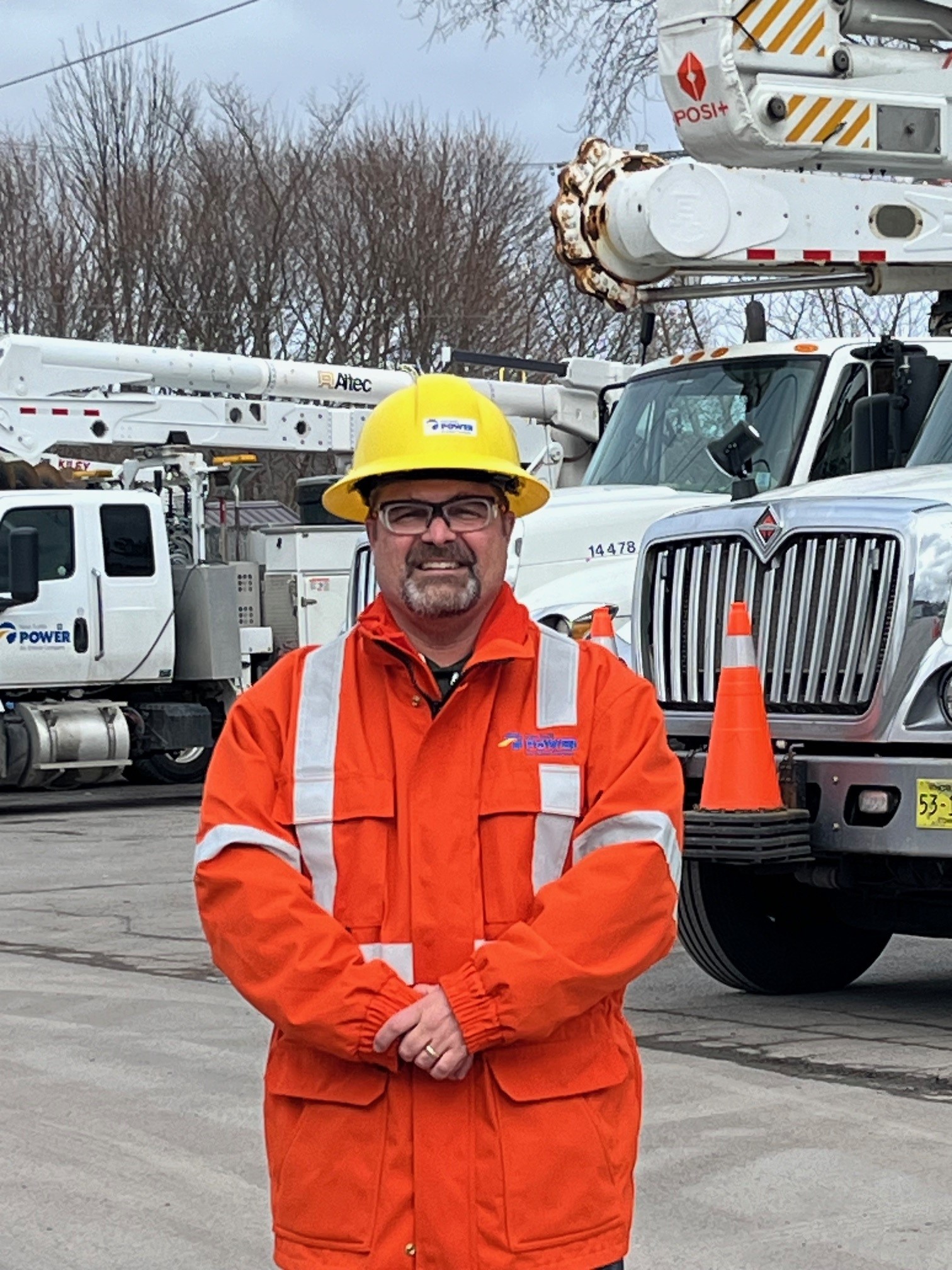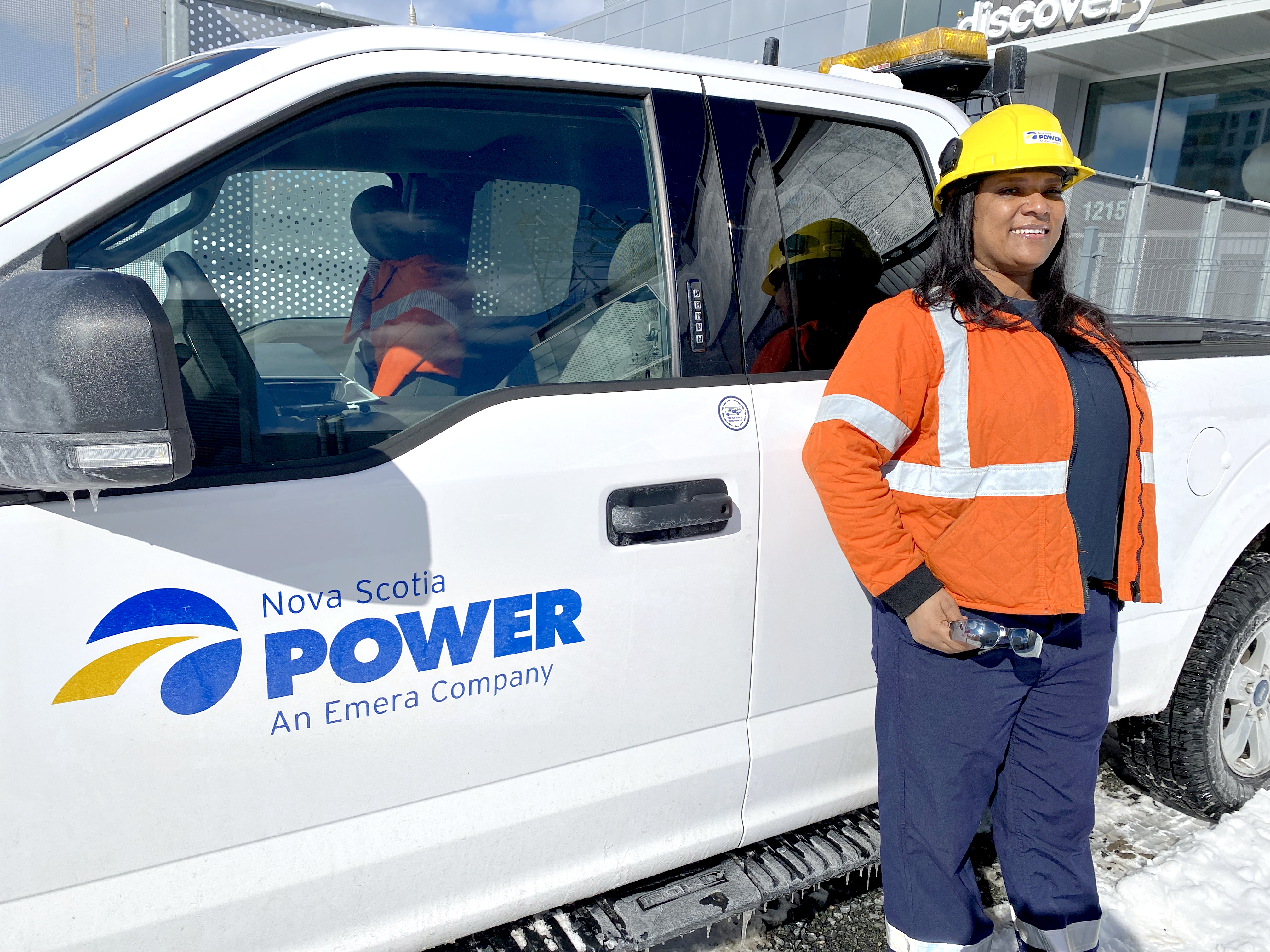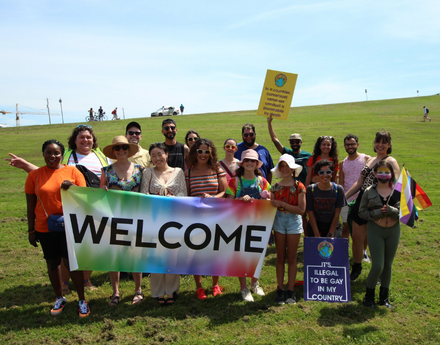A renewable energy spotlight on International Women’s Day
Aimed at tackling economic disempowerment, this year’s International Women’s Day theme is “Invest in Women: Accelerate Progress”. Through an honest discussion with Joanna Osawe, President & CEO of Women in Renewable Energy (WiRE), and Lia MacDonald, Vice President of Customer Experience & Innovation at Nova Scotia Power, we’re diving into the achievements, challenges, and aspirations of women working in a traditionally male-dominated field: the energy sector.
While co-founding WiRE over a decade ago in Ontario, Joanna was met with initial resistance and feedback that she was unnecessarily “dividing the sexes”. After spending much of her career on construction sites and within wind development, she knew there was a need, not only for women but for underrepresented women and groups, to have space to work and grow within the renewable energy space.
Back on the east coast, Lia was embarking on her career as an electrical engineer, where—retrospectively—she was unaware of the inequality of being one of the only women on her team, in the depot, and the field. Now a senior leader at NSP, Lia leverages her experience to foster diversity, exemplified by the WiRE-Nova Scotia Power partnership.
What obstacles do you see women facing in this traditionally male-dominated field?
JO: Engagement from a young age is critical—young minds are so important. A 2018 survey showed girls don’t pursue science, technology, engineering, and mathematics (STEM) roles because of stereotypes. There is still a stigma attached to women in fields like STEM and construction. There is a lot of behind-the-scenes sexism.
LM: Despite the gains—and there have been many—the societal structure in which we operate is still gender biased in many ways. As Joanna notes, this shows up in terms of how girls are aware of or encouraged to pursue STEM fields to how women mid-career are often disproportionately depended on or expected to be caregivers outside of work. This can surface in terms of overtime availability, opportunities to work on or travel for new projects, or something as simple as needing to leave a few minutes early for child pick-up or to care for other family members when compared to male-counterparts. I am encouraged with how the “caretaking juggle” has been enabled and embraced more among our male colleagues—both by policy and societal attitudes in general—but there is more to do.
Celebrating accomplished women and providing equal workplace opportunities can challenge these beliefs and promote work-life balance, leveling the playing field.
How do you think the renewable energy sector can improve diversity and inclusion, and what role do women play in fostering this change?
JO: We need to empower each other and lift each other up. We need to know we have a voice and to engage more with each other. How are we going to have meaningful conversations without diversity, equity, and inclusion?
LM: By removing silos and understanding where and how people should work together differently. We need to be comfortable having uncomfortable conversations.
In your experience, what opportunities exist for women in this field and how can these be expanded upon?
JO: I would like women to understand we don’t need to check all the boxes for job descriptions—I wouldn’t be where I am today if I did. Additionally, there is an elephant in the room: Women are tasked with admin duties by default.
LM: By investing in women through development and education, as well as investing in programs and policies that address micro-inequalities women face in the workplace—whether it’s adequately sized personal protective equipment or ensuring that notetaking and agenda setting isn’t always delegated to the women in the room.
On International Women’s Day, what achievements or milestones do you believe should be celebrated in the context of women’s contributions to the renewable energy sector?
JO: To recognize that women are unique and bring unique skill sets to the energy sector—we are passionate about making changes and bringing different perspectives. International Women’s Day serves as a reminder of the importance of advancing gender equity in all aspects of society, including the transition to a sustainable energy future.
LM: In Nova Scotia, we are on a path to reaching 80% renewable energy by 2030—and it’s going to take all of us working together to get there. It’s an ambitious goal, and to reach it, it’s critical that we bring different perspectives and experience to the table. I’m thrilled to already be working with so many women on the forefront of this transition—we still have work to do to grow representation in the energy sector, but it’s a positive step forward. The future for women in energy is bright.
WiRE plays an important role in empowering women in the energy sector through tools and resources, mentorships, and networking opportunities. On behalf of our team at Nova Scotia Power, we are pleased to have provided a financial contribution to the Nova Scotia Chapter of Women in Renewable Energy earlier this year. It is our hope that this contribution will help WiRE further their mission in assisting women across the province advance their careers in this dynamic field.
Share This Post:





